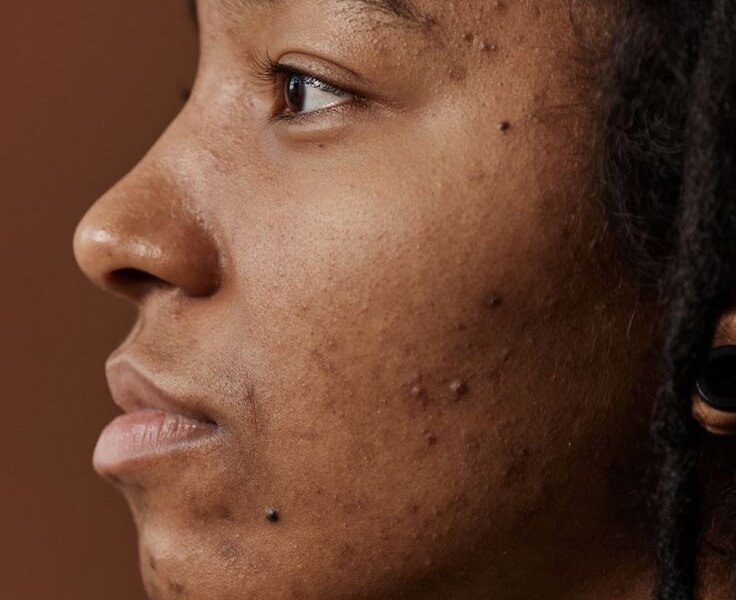Music video director TG Omori recently revealed that he had kidney failure, which he attributed to alcohol poisoning. Tragic as this is, not many people realise that they could end up facing the same fate—or worse—from something as seemingly harmless as their skincare routine. In our relentless pursuit of glowing skin, we often forget that not all that glitters is gold or, in this case, not all that promises youthful radiance is good for us. Behind the glossy packaging, alluring promises, and influencer endorsements, there’s a darker side to skincare: the real possibility of skin damage and health risks when we get it wrong.
The allure of instant results: A dangerous game
We live in a world where results are expected in the blink of an eye. The beauty industry knows this all too well, flooding us with products that promise overnight miracles. A cream that claims to erase wrinkles while you sleep? Sign me up! A serum that makes dark spots disappear in days? Take my money! But here’s the catch: in our impatience for perfection, we may not be aware of what’s lurking inside those bottles and jars.
Many of these products are loaded with harsh chemicals like parabens, sulphates, and synthetic fragrances, which, while effective in delivering quick results, can wreak havoc on our skin over time. They strip away the skin’s natural oils, break down the barrier function, and lead to a cascade of problems—dryness, redness, and even long-term damage like premature ageing. And that’s just the skin-deep consequences.
Skin bleaching: When beauty turns toxic
We’ve all heard about the skin-deep effects of bleaching, but the risks go far beyond the surface. Prolonged use of these products can trigger a host of internal health problems. Mercury, a common ingredient in many skin-lightening creams, is a toxic metal that can seep into the bloodstream, leading to mercury poisoning. This can have devastating effects on the kidneys, causing renal failure, and can severely damage the nervous system, leading to symptoms like tremors, memory loss, and mood swings.
Other ingredients, like hydroquinone, still widely available despite being banned in many countries, can not only cause skin damage but also disrupt the body’s natural hormonal balance. Long-term use has been linked to conditions like ochronosis, a disorder that leads to bluish-black discolouration of the skin, and even to an increased risk of certain cancers.
Steroids in skincare: The hidden enemy
Steroids, in particular, are a hidden threat. Often found in unregulated skin-lightening creams, while effective under medical supervision for certain skin conditions, these steroids can lead to thinning skin, delayed wound healing, and increased susceptibility to infections when misused. More alarmingly, they can be absorbed through the skin and into the bloodstream, causing systemic effects like hormone imbalances, adrenal suppression, and even kidney damage.
These powerful substances, often hidden in unregulated creams, can be absorbed through the skin and into the body, leading to a range of internal issues. Over time, steroids can cause hypertension (high blood pressure), which increases the risk of heart disease and stroke. They can also suppress the immune system, making the body more vulnerable to infections. In Nigeria, where the demand for quick skin-lightening solutions is high, these steroid-laden creams are often sold without proper regulation or oversight. Consumers are usually unaware of the risks, often suffering in silence when the effects start to manifest—sometimes years later.
Misinformation, misdirection, and the role of social media
A lot of skincare damage isn’t just because of what’s in the products, but also how they’re marketed and sold. Social media has given rise to a whole new wave of “skincare experts” who, with little to no dermatological training, advise their millions of followers to use certain products in ways that are not only ineffective but potentially dangerous. The results? A generation of consumers blindly layering acids, retinoids, steroids, and exfoliants with little understanding of the damage they could be doing to their skin barrier and overall health.
We’ve all heard the horror stories: the influencer who suggested mixing bleach into a DIY mask to treat acne or the “miracle” product that left a legion of followers with chemical burns. The problem is not just bad advice; it’s also the lack of accountability. Many brands fail to adequately test or disclose the long-term effects of their ingredients, leaving consumers to play a risky game of trial and error with their skin—and health.
Taking back control: How to protect your skin and health
So, how do we navigate this minefield? It starts with being informed. We need to stop treating our skin like a science experiment and more like the vital organ it is. Understanding your skin type, and what it needs (and doesn’t need), is crucial. This means not jumping on every trend bandwagon but choosing products with approved ingredients and a proven safety and efficacy track record.
Patch testing should become a non-negotiable part of our skincare routine. Start small, observe, and only incorporate new products fully if your skin approves. Learn to read labels, not just to recognise harmful ingredients, but also to understand which combinations of active ingredients can be potentially damaging if used together.
The pursuit of beauty should never come at the cost of our health. The damage from bad skincare can be severe, and often, it’s not just our appearance that suffers. The effects of poor skin care choices can reach deeper, affecting our overall health in ways we may not immediately see. It’s time to recognise that in skincare, as in life, the fastest route is not always the safest or most rewarding. The journey to healthy, beautiful skin is one that requires patience, care, and a commitment to putting our well-being first.



